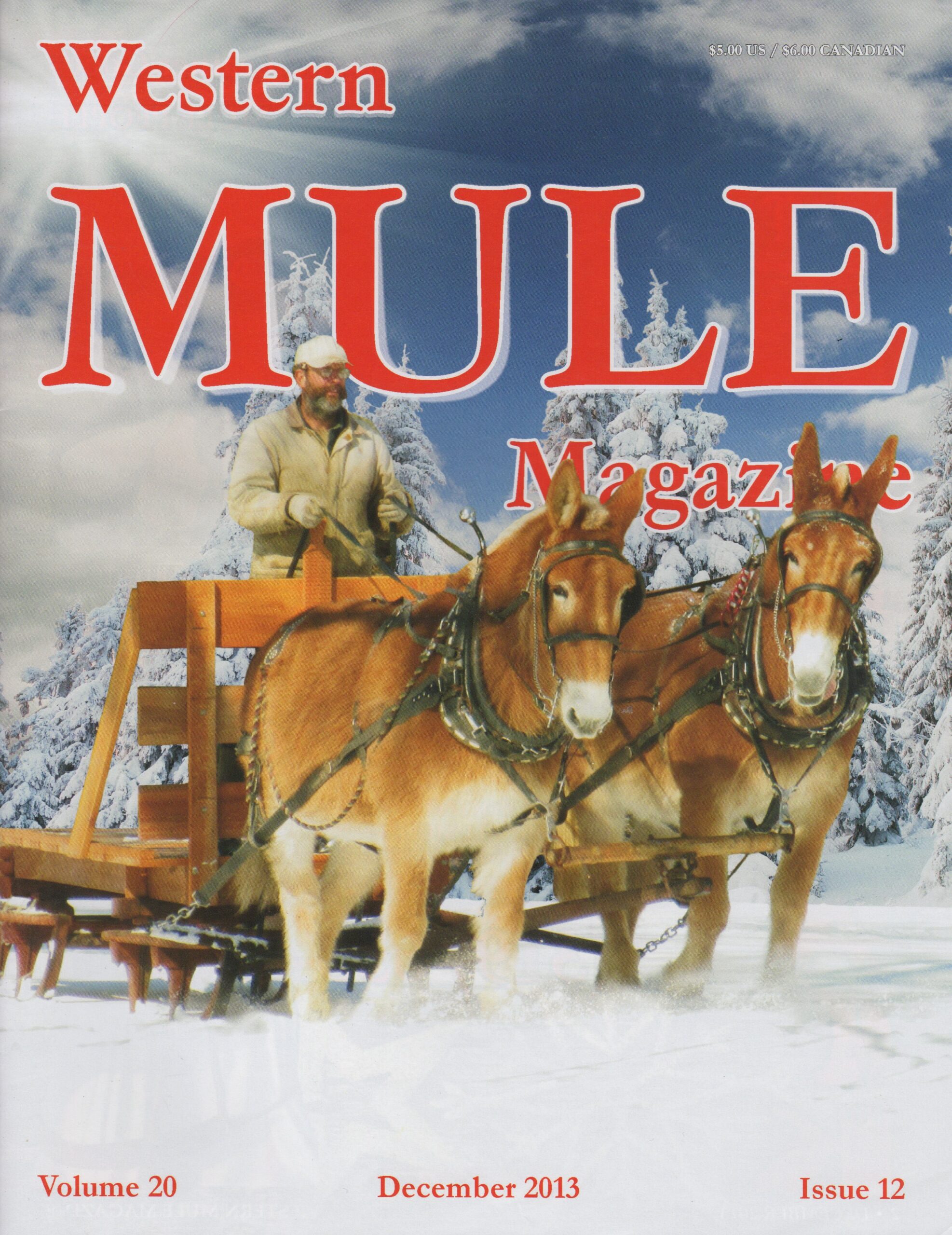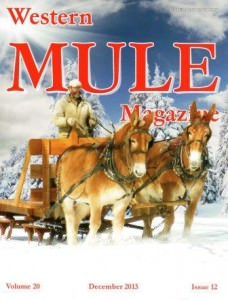As published in the December 2013 issue of Western Mule Magazine
For many of us there isn’t much motivation to get out and ride in the wintertime. Dealing with the extra layers, and the extra effort required at both ends of a ride make for much more hassle. To make the extra work worthwhile the ride had better be long and relaxing! To help make my rides more comfortable, safe, and fulfilling I’ve taken to following these steps during the winter months.
What’s the Forecast?
The weather forecast is a rider’s friend, a great planning tool, and something that we should pay attention to. For winter trail riders this is especially important as winter storms are noted for their sudden appearances and ferocity. Being caught out, without being prepared, in freezing rain or heavy snow can wreak havoc on your ride as well as the health of you and your mount.
What’s on the Ground?
For many of us our mental image of winter riding is cantering through a blanket of fresh powder. Fresh snow is an absolute joy to ride in and it’s a great workout. However, once that coat of powder has melted and refrozen, that feeling of unbridled joy will quickly change to one of slick terror. Trying to ride through snow covered in layers of ice makes for a grueling and miserable time for both you and your horse. Save yourself from wretched ride, and your horse from potential cuts from the ice, by staying indoors during these conditions.
Stay on the known Path
For me trail riding is all about going off trail and exploring what’s around the next bend. Winter isn’t the time for going cross country like that. That beautiful blanket of snow is deceptive and can hide ankle twisting holes and sharp sticks waiting to poke your mount. As tempting as it is to take off through a forest covered in pristine snow it’s best to stay in areas where you know what lies beneath.
Start Early
Daylight takes on banker’s hours in the winter; it starts late and goes home early. Riding in the dark, especially in the winter isn’t something that I usually enjoy. You’ll have to start early not only to bundle yourself up but also to accommodate the increased time and effort you’ll spend adjusting tack to fit over that vast mass of shaggy winter coat that your mount has grown. For this reason most of my winter rides occur either on the weekends, when I can head out at first light or in a lighted arena after dark during the work week.
Warm up your ride
It can be tricky to dress well for winter riding. Often being warm can be at odds with being able to feel the horse beneath you and having a good feel of the reins. Fortunately there are a number of modern insulating layers that are thin and toasty. I’m a fan of lightweight wool under layers but there are also synthetic materials that provide great protection without adding unneeded bulk.
Warm it up
Be kind and always warm up the bit before you bridle your horse. Putting a cold bit in a horse’s mouth is similar to having an ice cube stick to your hand. It hurts. If you wouldn’t want a cold piece of metal in your mouth don’t put it in your horses. I tuck the bridle and bit assembly into a warm inner layer of clothing before I start tacking up. By the time we’re ready to bridle, the bit is warm and we both get off to a good start to our ride.
To Shoe or Not
I generally take a break from shoeing in the winter months. Going barefoot gives hooves a rest from nails and shoes, reduces the chances of a nasty slip, and not least because metal shoes tend to accumulate snowballs that bother the horse and are a pain for us to try to remove.
Don’t Sweat
If you work up a sweat on your ride where will your horse be able to dry out without catching a chill? My barn isn’t heated, most aren’t. Any wetness from sweat will still evaporate and cool the animal. Cooling in an already chill area will drop your horse’s body temperature far too much, potentially causing illness or worse. My winter rides are long and slow to avoid raising a sweat. And when I take the saddle off I generally through on a blanket so that he cools off slowly without getting a chill.
Stall Your Horse Afterward So He Has a Warm Place to Cool Down
Although most barns aren’t heated, they are still a bit warmer than out in the open and are protected from the chilling effects of the wind. After a ride my horse likes to settle into a stall filled with dry shavings before heading back into the main paddocks. I’ve found that this helps to keep him warm while he finishes drying out and gives him a chance to enjoy a roll in fresh shavings.
As always, for more information on trail riding as well as North America’s largest equine trail and camping directory please visit www.TrailMeister.com
And remember – spring isn’t that far away!



